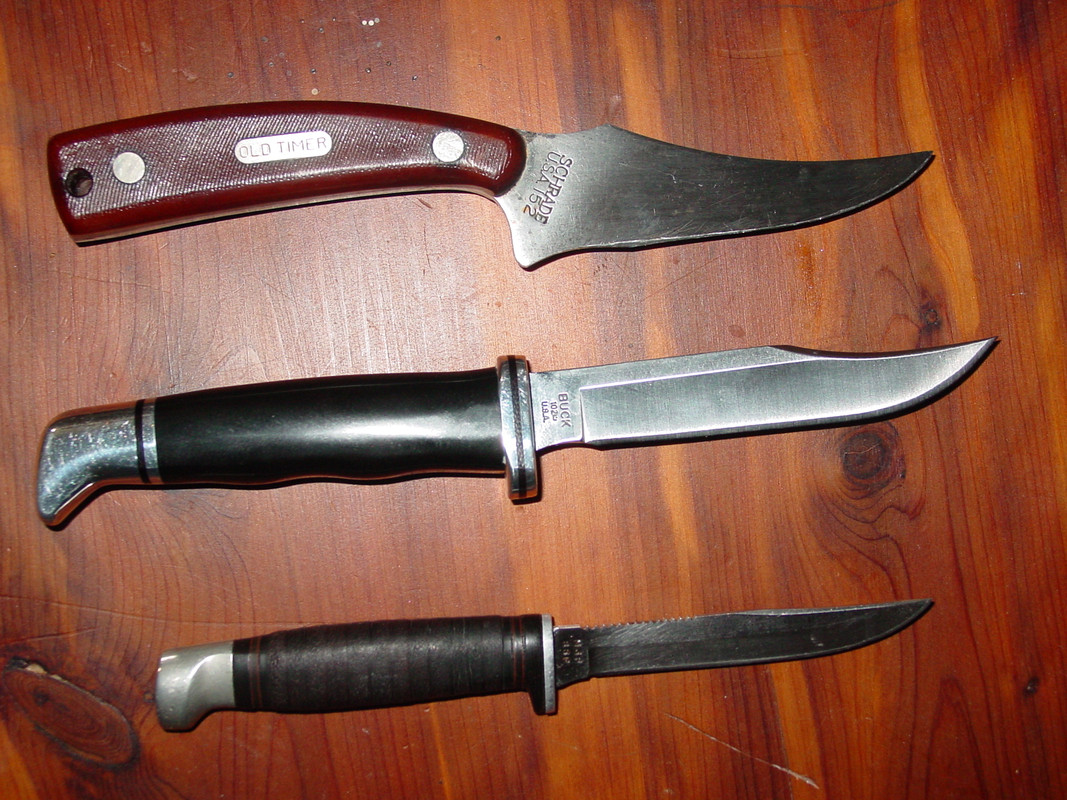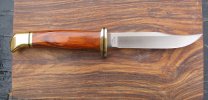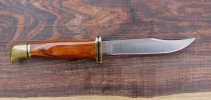In a world of sharpened pry bars, the 102 Woodsman is an anomaly.
Yes, it is on the small side, but I see that as a strength not a weakness.
It easily fits a lot of places larger knives struggle with. Plus, it disappears on your belt.
Its blade geometry and size allow it to punch way above its weight.

I am old enough to remember the first Honda Civic to hit our shores, as well as the first Datsun and Toyota pickups. It's astonishing to see how tiny these vehicles were compared to today's Civics, Nissans, Toyotas.
No matter what it is, we in America seem to like it bigger. I can barely see over the side of a Ford F-350 these days. Some trucks are so big, manufactures are putting steps into the tail gates so folks can climb into the bed.
When I was a young lad, whenever I could pry it out of his hands or off his belt, I used my dad's Schrade Bear's Head.

He purchased that knife in 1955 I believe. So I was already preconditioned to a knife that size when my Woodsman came along.
Something else that influenced and reinforced my thinking on the 102 was the first Air Force Survival Knife. Not the one commonly associated with the Air Force, but rather the Boker 155. Here is some info on that for anyone interested.
The 155 was paired with other tools in the E1 Kit. Like a saw. I figured if a knife that size was good enough for a bomber crew bailing out over hostile territory, i could probably get by with one for my woods roaming, rabbit skinning and spud slicing.
I think we have been conditioned that bigger is better, and in some cases I may very well be. I do at times chuckle, when I see folks in campgrounds carrying large survival style knives. When many never get more than fifty feet from their vehicle. To be fair, I have been up and down the knife spectrum myself, several times.
Then in 1982 everything changed. That was the year Mr. John Rambo hit the theaters.
The knife industry has never been the same.
Knives the size of the Woodsman are almost mocked these days. But having spent more time in the woods than in front of a television set. I have managed to carry on.











